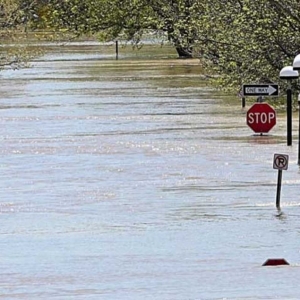The Stream, March 5, 2021: US Drinking Water Infrastructure Receives C- Grade
YOUR GLOBAL RUNDOWN
- A new report gives poor grades to U.S. water infrastructure.
- Not responding to water risk is costlier to companies around the world than taking proactive measures now, a report finds.
- A utility in Queensland, Australia asks customers to conserve water as dam levels drop.
- A program between British Columbia and Alaska to ensure water quality is ending.
Freshwater issues gain ground among conservationists globally.
“If we don’t make the right investments for our freshwater ecosystems, it’s going to be too late. The ship will have sailed, and we won’t be able to turn around.” – Ian Harrison, a freshwater specialist with Conservation International. Freshwater issues are becoming a higher priority for environmentalists, National Geographic reports. The quality of rivers, lakes and wetlands around the world have declined due to poorly planned dams, pollution, habitat loss, sand mining, climate change, and the introduction of invasive species.
IN RECENT WATER NEWS
In Case You Missed It:
The Biggest Coal Power Plant in the American West Closed. What Happens with the Colorado River Water It Used? – Navajo Generating Station shut down in 2019 and is now being dismantled. The Colorado River water that cooled the plant is part of a broader legal impasse.
Rights vs. Regulations: When it Comes to Septic Codes, Property Rights Remain a Big Barrier – In Michigan, with public health departments fully occupied with COVID-19, septic systems have been pushed back as a priority.
New Report Gives U.S. Drinking Water Infrastructure C-
The American Society of Civil Engineers, in its 2021 Infrastructure Report Card, gave an overall grade of C- to infrastructure in the United States. The report marks the first time in 20 years that U.S. infrastructure received a grade above the D range. Highlights from the report include a C- grade for drinking water, a D+ for wastewater and D’s for both dams and stormwater.
TODAY’S TOP WATER STORIES, TOLD IN NUMBERS
3,000 COMPANIES
A new report finds a clear economic rationale for companies to reduce the strain on the world’s fresh water. The annual report is from CDP, a London-based nonprofit that works with investors to encourage businesses to reveal environmental risks to their operations. The report found that the cost of not responding to water risks could be five times higher for companies than taking proactive measures now. In general, companies featured in the report are taking more action to address water scarcity than they are to address water pollution. This version of the CDP report is based on survey responses from nearly 3,000 companies in 12 sectors, including mining, food, apparel, and energy.
150 LITERS OF WATER PER DAY
Queensland Urban Utilities is asking customers to reduce their water use to 150 liters (39 gallons) per day as the region’s dams hit their lowest post-summer levels since the Millennium Drought in the 2000s. Brisbane Times reports that most residents currently use about 160 liters (42 gallons) a day. As of Thursday, the southeast Queensland water grid was just under 57 percent. Mandatory region-wide water restrictions will be introduced if the region’s drinking water reservoirs fall below 50 percent.
ON THE RADAR
Officials in British Columbia and Alaska have announced they will not continue collecting data on three transboundary watersheds, the Associated Press reports. The move prompted criticism from fishing and tribal groups who say the governments have not done enough to ensure water quality is adequate. In a final report, officials found that waters on Alaska’s side of the border met water quality standards.
In context: Alaska Seeks River Protections Against British Columbia Mines
Jane is a Communications Associate for Circle of Blue. She writes The Stream and has covered domestic and international water issues for Circle of Blue. She is a recent graduate of Grand Valley State University, where she studied Multimedia Journalism and Women, Gender and Sexuality Studies. During her time at Grand Valley, she was the host of the Community Service Learning Center podcast Be the Change. Currently based in Grand Rapids, Michigan, Jane enjoys listening to music, reading and spending time outdoors.







Leave a Reply
Want to join the discussion?Feel free to contribute!